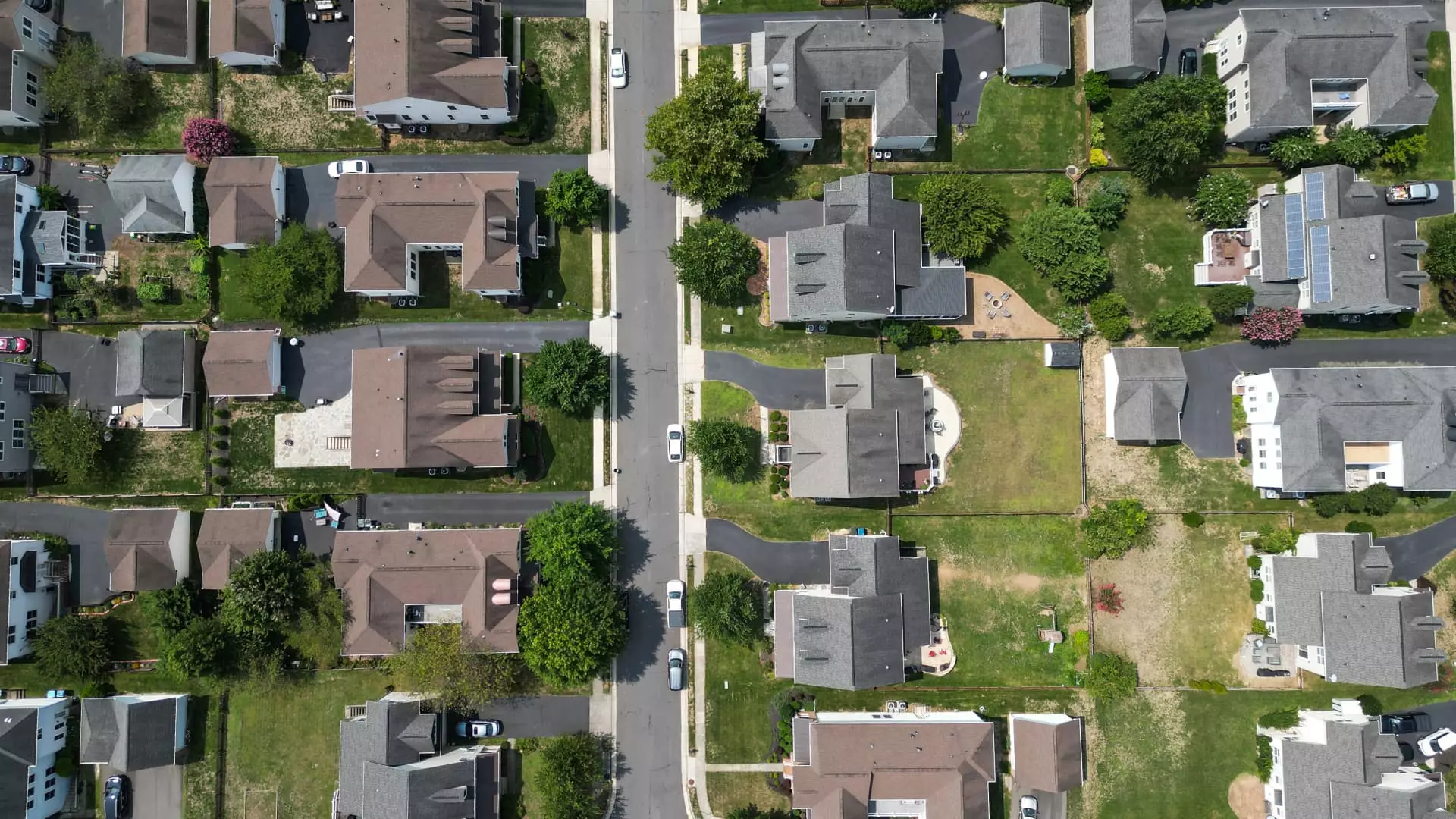Amidst the ebbs and flows of economic indicators, mortgage rates have unexpectedly escalated to their highest levels in over a month. The 30-year fixed mortgage rate shot up a staggering 22 basis points on Monday and added another 3 on Tuesday, setting the average at 6.85% as reported by Mortgage News Daily. This rapid rise raises alarm bells; it doesn’t merely signify an impermanent fluctuation but rather sheds light on leanings within a fragile economic environment. The sudden spike in mortgage rates indicates a lack of stability and leaves many homebuyers in a state of confusion and dismay.
As recently as last week, mortgage rates had hit a welcome low since the previous October, primarily propelled by reactions to President Donald Trump’s pronouncement on global tariffs that sent ripples through capital markets. This dizzying change in direction reflects how interconnected and volatile our financial landscape has become. Homebuyers hoping for a break in high mortgage rates to ameliorate the burden of rising home prices are in for a disheartening jolt.
The Market’s Panic and Its Implications
Matthew Graham, the chief operating officer at Mortgage News Daily, aptly identifies this week’s rise in rates as a shift away from the panicked response to last week’s tariff discussions. The surge pulled investors back into bonds—often viewed as a safe-haven asset—thereby driving yields lower, which are inversely related to mortgage rates. The phrase “melting ice cube,” used by Treasury Secretary Scott Bessent, cleverly encapsulates a precarious balance in financial sentiments. Essentially, what seemed manageable suddenly appears to be melting away, creating a very real concern that today’s homebuyers face a double whammy of high mortgage costs combined with escalating home prices.
The underlying sentiments suggest an economy gripped by uncertainty and fear, leading investors to pivot towards bonds, thereby distorting the previous trajectory of interest rates. Given that mortgage rates tend to follow the 10-year Treasury yield, this segment of the economy remains highly susceptible to fluctuations based on investor anxieties over broader economic health.
Homebuyers in a Tight Spot
For potential homebuyers, the timing couldn’t be worse. A spring housing market that some anticipated with excitement has instead emerged as a landscape fraught with challenges. The combination of rising mortgage rates, high home prices, and a general uncertainty in job security feeds into an environment where confidence in purchasing a home is dwindling. Moreover, Danielle Hale, chief economist at Realtor.com, noted an increase in the number of homes for sale, which offers a glimmer of hope for buyers. But without corresponding affordability driven by manageable mortgage rates, the market risks sinking deeper into a sluggish status.
The reality reflects an unsettling paradox—while the availability of homes looms greater, the ability of buyers to engage meaningfully in the marketplace remains stunted by financial barriers. This crisis of affordability ties closely back to economic concerns that seem to limit the enthusiasm of buyers. The countdown to the next significant economic reports, like the consumer price index and producer price index, feels like a desperate call to arms for homebuyers, as any meaningful advancements in mortgage rates rely heavily on the outcome of these metrics.
The Long Road Ahead
Even if we see deflation in rates, it’s worth asking if that will significantly impact buyer behavior. January and February experienced the largest reductions in mortgage rates this year, dropping from 7.26% to 6.74%. Yet this apparent reprieve allowed for only a 2% increase in pending home sales. Lawrence Yun, chief economist for the National Association of Realtors, painted a sobering portrait: contract signings continue to lag behind historical averages, illustrating a broader narrative in which many potential buyers are unsure about stepping onto the housing treadmill.
When examined critically through the lens of economic realities, the current development of mortgage rates doesn’t just signify numbers on paper; it represents the psychological barriers that buyers must confront. The focus isn’t just on achieving lower rates—it’s about inspiring confidence in a marketplace that feels increasingly disjointed and unreceptive. A housing market where affordability remains a key challenge inevitably leads to a stagnation that undermines economic recovery. One must hope our policymakers recognize this and act decisively to restore balance.

